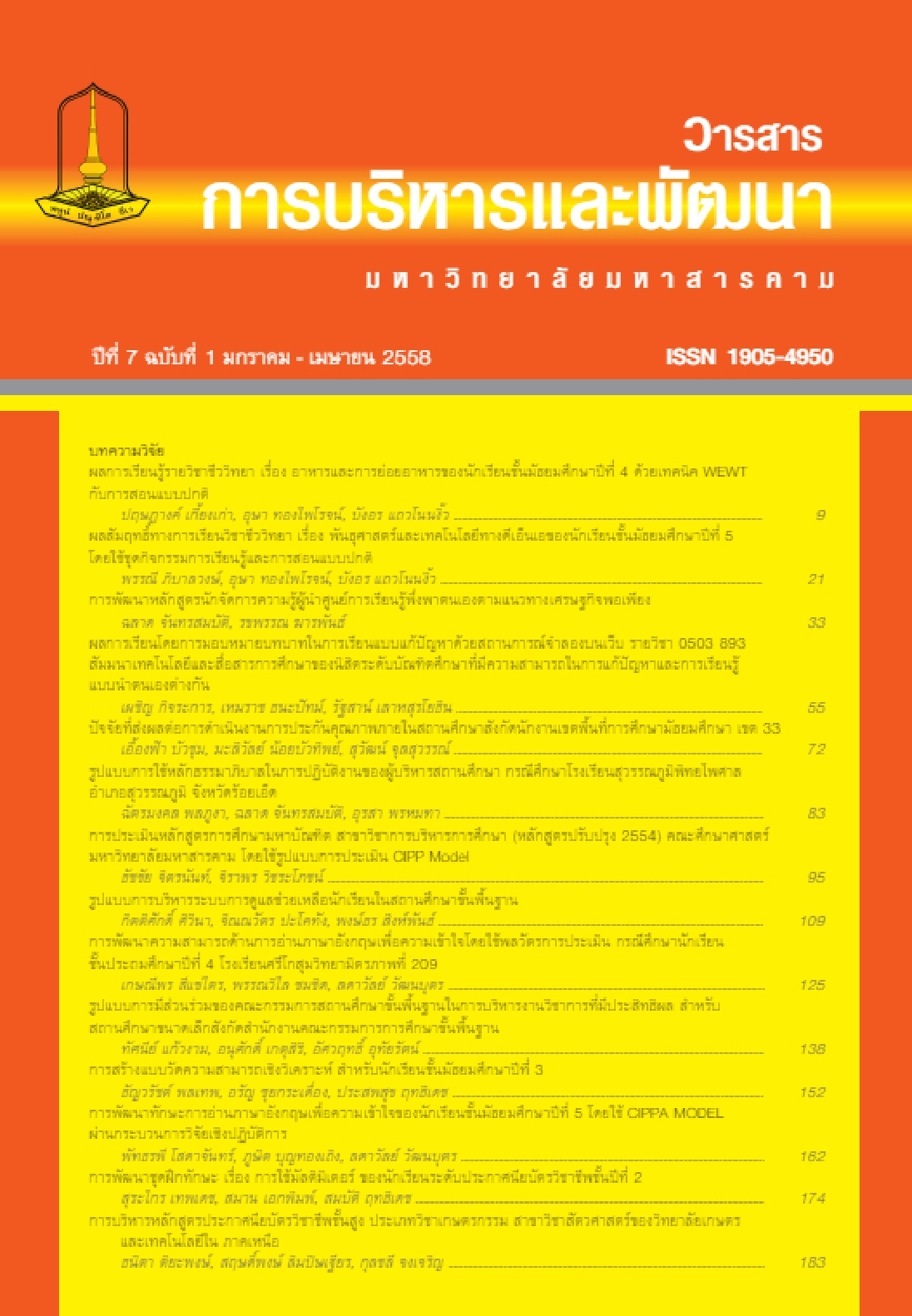A Construction of a Critical Skill Test For Matthayom Suksa 3 Student
Main Article Content
Abstract
The objectives of the study were to 1) construct a critical skill test for Matthayom Suksa 3 students in Amnatcharoen Province ; 2) to investigate thequality of the critical skill test ; and 3) to create the overall norm for critical skill test for Matthayom Suksa 3 students in Amnatcharoen Province. The sample of the study were 400 students under the Amnatcharoen Education service Area in the 2nd semester of 2011. The sample were selected through a Multi-Stage Random Sampling technique. The critical skill test consisted of 50 items with four multiple choices each. The statistics in the study were mean, standard deviation, Biserial correlation, and internal consistency coefficient of Kurder Richardson Formula (KR-20). The test quality were analyzed by difficulty index, discriminating values, reliability value, internal correlation and standard error. The construct validity within the test analyzed by using confirmed component analysis in both first and second orders.
The research findings were as follows:
1. There were 50 items of the critical skill test, the 17 items on verbal ability, the 20 items on logic and the 13 items on figures and symbols. It took about 60 minutes to complete the test. 2. The difficulty indices were in the range of 0.247 – 0.637, discrimination indices were in the range of 0.247 – 0.808 and the reliability coefficient of the test was 0.89. 3. The local norm of the critical skill test for Matthayom Suksa 3 students in Amnatcharoen Province had an interval score ranging from T22.8 to T 65. To have the same standard, the researcher established a local norm in term of normal Tscore, namely, from T 65.0 above Ca raw score of 31 and above) refers to the students with very high level of critical skill ; T55 to 65 Ca raw score 0f 24 to 30) refers to the students with high level of critical skill ; T46 to 54 Ca raw score 0f 18 to 23) refers to the students with low level of critical skill ; the score lower than T46 Ca raw below 18) refers to the students with very low level of critical skill
Downloads
Article Details
References
Chawan Phaeratakul. (1982). Item Writing Technique. Bangkok: Phaeratakul Printing House.
Kanjana Homsing. (2009). The Construction of Analytical Thinking Test about Mathematics for Mathayom Suksa 5 Students. Master of Education in Measurement and Evaluation, Khon Kaen University.
Kowit Pravalppuk. (2008). Thinking Classroom Project. Thinking Development Using GPAS Process. Bureau of Educational Innovation Development, Office of the Basic Education Commission, Ministry of Education. Publisher of the Agriculture Co-operative Federation of Thailand., Ltd.
Office for National Education Standards and Quality Assessment. (2005). Standard Indicators and Criteria for Second Round of External Quality Assessment (2006-2010).
Tissana Kaemanee. (2008). Thinking Science. Bangkok: The Master Group Management Co.,Ltd. Press.
Tissana Kaemanee. (2008). Thinking Process Development: various guideline for teacher. Bureau of Educational Innovation Development, Office of the Basic Education Commission, Ministry of Education. Publisher of the Agriculture Co-operative Federation of Thailand., Ltd.

